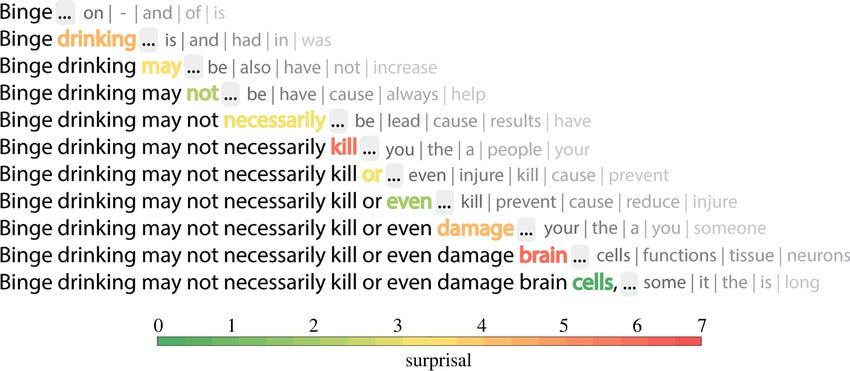(I) You Are Replaceable
In the new AI era, bosses everywhere are emboldened to tell their employees they can use be replaced. We’re seeing it many industries, but especially in my world of tech.
There’s a new power dynamic in the workplace. Workers are now required to do more than before. A typical job can now be up to three jobs in one.
The new corporate management wet dream is to have entire departments replaced by a puppeteer orchestrating dozens, if not hundreds of AI Agents.
Employees are feeling the heat. I’m feeling the heat.
I was wondering: What can you do today to future proof your career for the next decade?
(II) Do Impossible Tasks
In the olden days, if your role could be taught in school, you’d eventually have to compete with recent graduates who can replace you for less pay.
Today, you’re going to have to “compete” with AI. In a leaked email, the CEO of Fiverr acknowledged that AI is coming for everyone’s job. Including his.
The last phrase hits different:
“What was once considered ‘easy tasks’ will no longer exist; what was once considered ‘hard tasks’ will be the new easy, and what was once considered ‘impossible tasks’ will be the new hard. If you do not become an exceptional talent at what you do, a master, you will face the need for a career change in a matter of months.”
Micha Kaufman
He’s not merely saying you’ll lose your job if you can’t adapt. He’s saying you won’t have a career if you don’t adapt. You have balls of steel if this doesn’t give you the nervous sweats.
What’s more is that filling open headcount is now scrutinized more than before.
As part of a leaked memo, Shopify’s CEO said that hiring managers need to confirm that a job cannot be done by AI before making a new hire.

Finding creative ways to replace headcount with AI Agents isn’t exactly “fun” when you’re looking for a job. So how can you future proof your career?
You need to become an exceptional at your job. By doing more with less using the tools (AI) available to you.
(III) Build New Skills Learn New Tools
Since 2024, just one year ago, the way people use AI has transformed dramatically.
Last year, I used Chat GPT to generate an image of Brutus Buckeye beating up the Notre Dame leprechaun.
Today, I might use it to scrape sales meeting transcript data to come up with talking points for a follow up meeting.
Next year, who the hell knows. The use cases are rapidly evolving.
The most valuable often cannot be taught. They’re learned by doing.
Learn how to use AI to solve work problems that were previously unsolvable.
Make what was previously impossible, merely hard.
(IV) Arm Yourself With Specific Knowledge
Specific knowledge is information that cannot be taught at scale. Pick up and capitalize on specific knowledge because this is what AI cannot spit out answers for.
Some examples:
Having the best understanding of a new sales territory.
Knowing your product better than anybody else.
Being able to articulate all the information that goes into a sales playbook.
In essence, be on the bleeding edge of technology and creativity.
(V) AI Isn’t Generally Intelligent… Yet
Today, AI isn’t generally intelligent. Therefore, humans are still useful for something. For the time being.
Why? Gary Marcus, an AI expert weighs in.
“[AI] doesn’t understand the relation between the facts that are embodied in the little bits of sentences. Basically it’s doing auto-complete. It predicts what is statistically probable aggregating all of these signals not knowing how all the pieces fit together. It winds up with things that are plausible but not true.”1
Gary Marcus
Most AI gurus don’t like to talk about it, but AI has some weaknesses right now.
The reason why? LLMs operate on statistical pattern recognition. That’s a super duper smart way of saying they can only predict the next word based on a given context.

What does this mean for you?
(i) Learn to use AI tools as well as possible for the things it is good at today: repetitive tasks, research, and coding within a singular well defined domain.
(ii) Lean into what AI isn’t good at: Re-telling your lived human experience. And contextually connecting ideas across disconnected domains of knowledge.
"From today, painting is dead!"— Paul Delaroche
(VI) Closing
In 1840, Paul Delaroche, a French painter saw the first photograph. From that moment he declared “From today, painting is dead!”
His comment reflected the anxiety many painters felt about the invention of the camera. Sound anything like tech workers feel about AI today?
Looking back, we know how the story of photography unfolded.
Painting as an art form did not die.
Photography became an art form in itself.
Everybody lived happily ever after.
Watching technological invocation unfold first-hand is jarring. Change is uncomfortable. But it’ll give way to new opportunities. What was once impossible is now just hard. What was once hard is now easy.
If there’s one advice I can give it’s this:
Figure out how to make the impossible, hard.
Become fluent in making the hard, easy.
Focus on growing in areas AI is weak.
Thanks for coming to my Ted Talk. 🙇🏼♂️
— Grant Varner
For more on this topic, check out two excellent talks by Gary Marcus. The quote is from his TED Talk (watch here), but both are worth your time:
– TED Talk: The Urgent Risks of Runaway AI
– Talk: Deep Learning is Hitting a Wall





Great write up!